The 30 Greatest Holidays in Greece for 2025
From Santorini sunsets to ancient ruins,...
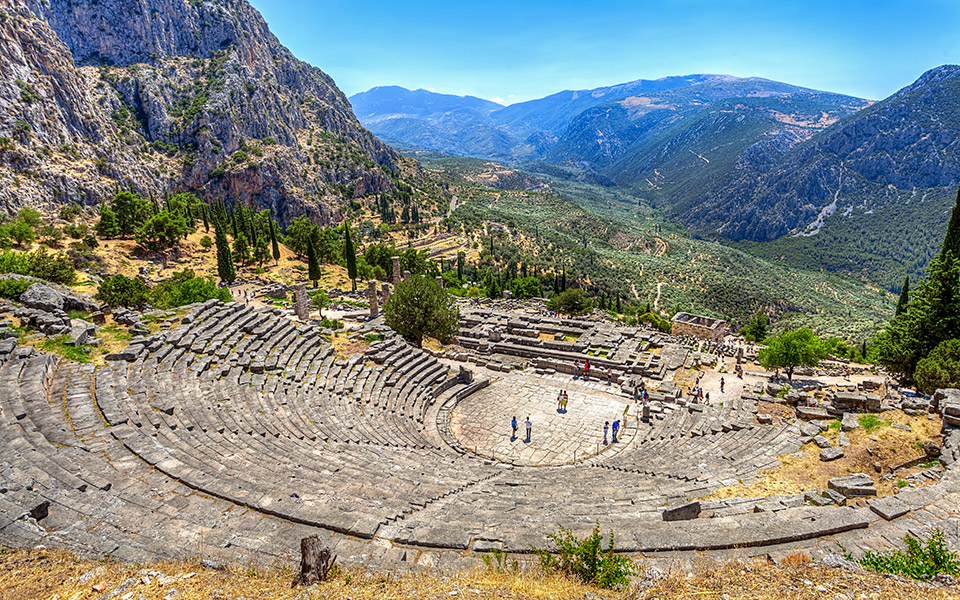
The Ancient Theater of Delphi on the slopes of Mount Parnassos.
© Shutterstock
By driving around the Corinthian Gulf, we can sample the various types of tourism available in Greece: beaches from Xylokastro to Nafpaktos, archaeological sites from Corinth to Delphi, endless olive groves, spring wildflowers, rivers, mountains, outdoor activities, gastronomic experiences, castles and bridges—all within a few hours’ drive of Athens.
Weeks could be devoted to the area, but even a few days enable a quick taste of its wide-ranging offerings. We started by heading for the northern side of the gulf. On the winding mountain road that runs through Delphi, you may run into some bottlenecks if there is traffic, especially around Arachova, but the spectacular forested scenery makes up for the slower progress. Even those who are unimpressed by the well-known historical and archaeological significance of Delphi, the center of the ancient Greek world, may appreciate its striking natural beauty and an invigorating walk up and down the slope of Mount Parnassus.
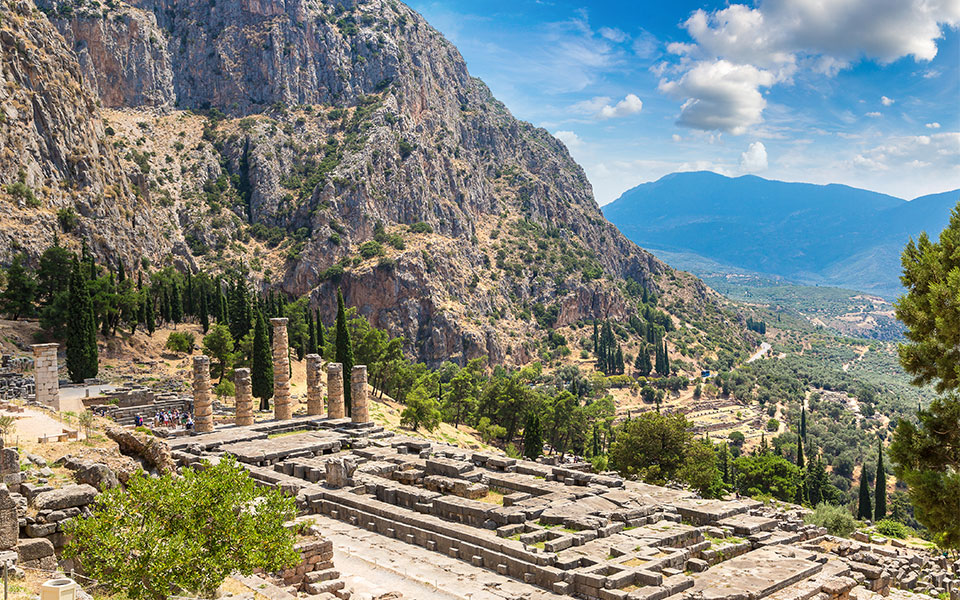
© Shutterstock
The main section of the archaeological site, with its path among the remains of the ancient temples, the re-erected treasury, a replica of the serpent column, the amphitheater, and the stadium, contains remnants of pillars, walls, buildings, and theater and stadium seating, all overlooking tree-covered slopes and valleys. In the spring, the mountainside is brightened by the crimson, gold, pink, white, and lilac hues of wildflowers. The temperature is ideal, and the site is not overcrowded.
A number of particularly well-preserved marble and bronze sculptures make a visit to Delphi’s archaeological museum worthwhile (and it is included in the site’s entrance fee). Back outside, looking down the hill toward the three reconstructed columns of the Tholos below the road, we see that olive groves surround the ancient monuments. Below the site, plains full of a million olive trees extend all the way to the Gulf of Corinth in Greece’s largest continuous olive grove, which is known as the sea of olives.
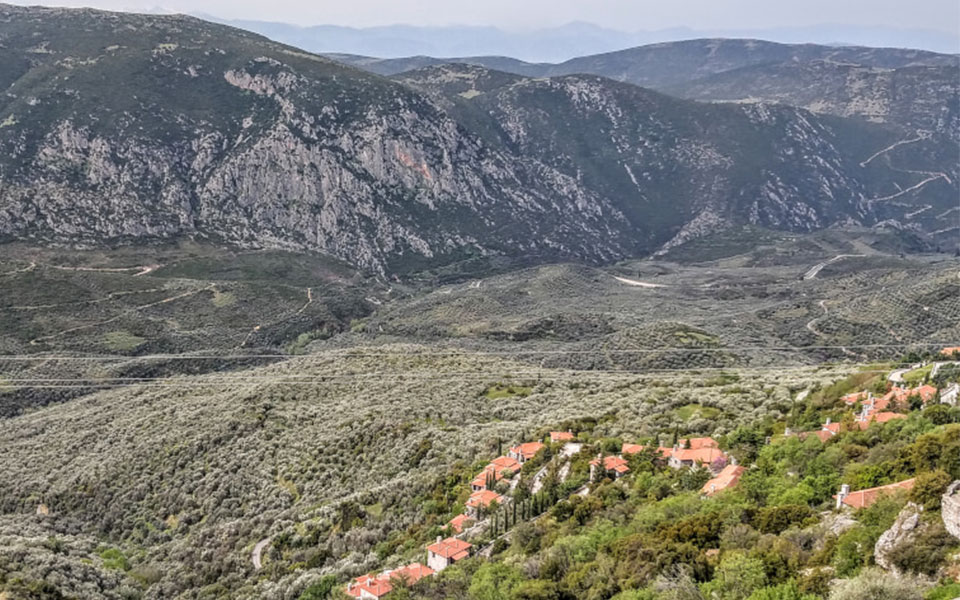
© Lisa Radinovsky
Olive trees are central to Greek culture, history, and economic life, so it is virtually impossible to visit Greece without seeing them and consuming their products. For a full experience of Greek cuisine, sample a generous selection of the country’s renowned olives and extra virgin olive oil. Growing numbers of agrotourism and culinary tourism ventures offer plenty of opportunities for visitors to learn more about the flavors, health benefits, production, and history of Greek olive oil.
For example, on the hillside a short way off the road that heads from Delphi down toward Itea, the mer des oliviers de Delphes olive oil tasting facilities, shop, and restaurant welcome visitors with a wonderful panoramic view of the sea of olives below them. Featuring dishes rich in their own award-winning extra virgin olive oil (EVOO), the restaurant is open from the middle of April through the end of October. Their EVOO comes from 1000 year old trees in the valley of Delphi and is bottled right next door. Free guided olive oil tastings are available year-round, along with olive and tapenade samplings, plus a discussion of olive oil production and its long, rich history in the area.
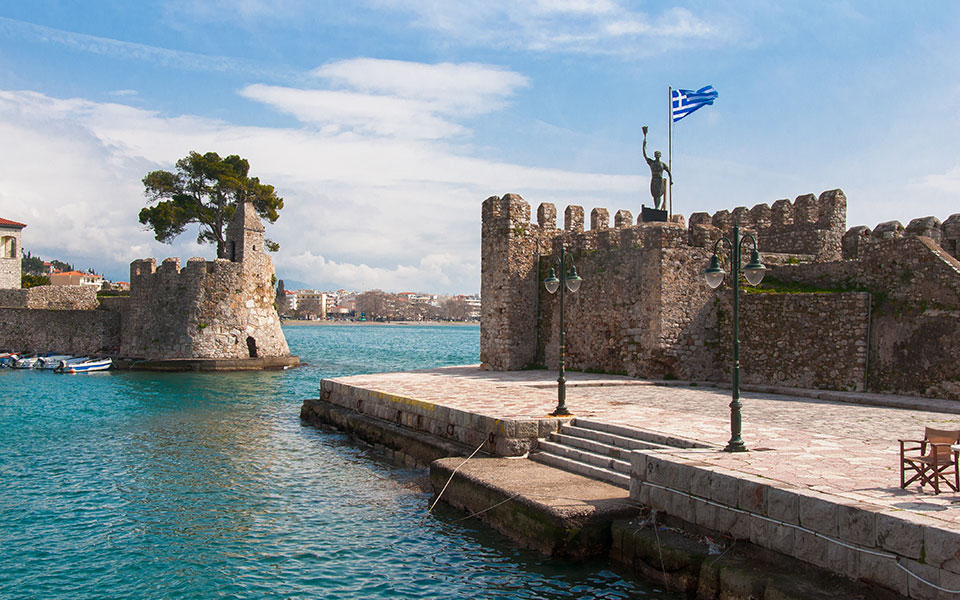
The old fort of Nafpaktos
© Shutterstock
After Delphi, the road descends from the mountains, meanders through the olive groves, and then mainly stays closer to the coastline, eventually coming to our destination in seaside Nafpaktos. We stayed at the Flisvos Hotel by the town’s pebbly beach. With a friendly, helpful staff and clean, spacious rooms, the hotel provides free tourist guidebooks and gastronomy guides that highlight traditional recipes and local products, from mountain herbs and chestnuts to olives, olive oil, and seafood.
The hotel breakfast buffet includes a wide selection, from omelet and pastries to traditional Greek flavors such as olives, olive spread, dakos, spoon sweets, yogurt, and little spinach pies. Nafpaktos boasts a variety of restaurants, from the casual seaside Xilofournaki for excellent pizza baked in a wood oven to the more classic Greek taverna Ev Oinos and, for creative cooking and presentation, the upscale harborside Kouzina Loi founded by Maria Loi, a Greek celebrity chef and ambassador of Greek gastronomy.
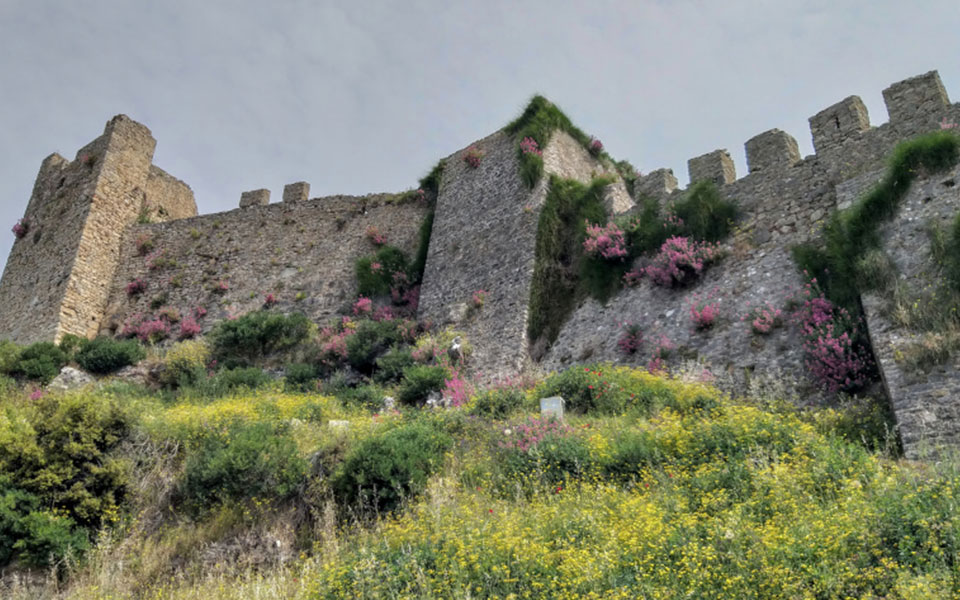
The Castle of Nafpaktos
© Lisa Radinovsky
One of the main attractions of the town of Nafpaktos is its harbor, which is surrounded by cafés and restaurants and bordered by a crenellated Venetian fortress wall with a picturesque archway and a small tower. Looking up from the harbor and the long, wide pebbly beach that curves around a bay, visitors can see the Venetian castle that stretches out on the pine-covered hill above the town.
A smooth road now runs up to the Castle of Nafpaktos, but for those who are able it is worth climbing cobblestone steps and paths, and then walking up the road through the forest, to better admire the town’s array of red-tiled rooftops against the backdrop of the Gulf of Corinth, with the Peloponnesian mountains across the water, and the curve of the bay reaching toward the Rio Antirrio bridge on the horizon. Castle walls begin to appear part way up the hill. At the end of April, wildflowers decorate the hillside, roadside, and stone walls with delicate touches, sweeps, and blends of color. While castle rooms are not open to visitors, the combination of well-preserved massive walls, pine trees, and scenery invites exploration.
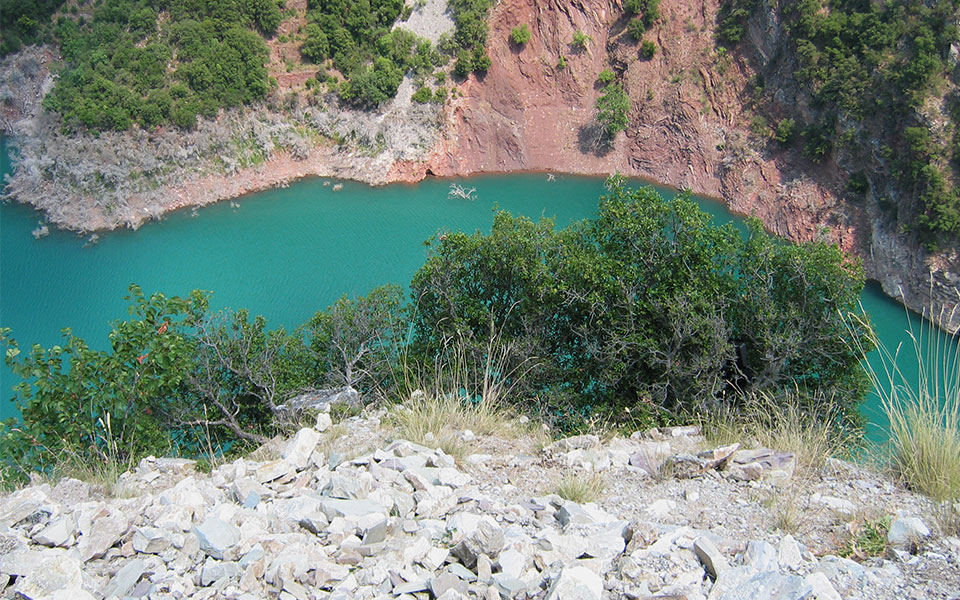
The Evinos River
© Shutterstock
So do the region’s hills and mountains. It is worth enduring poor roads with potholes to drive inland among fresh green forests and spring wildflowers to the Evinos River below the Bania Bridge. The noise of the bridge when cars cross it is so startling that locals have posted a sign asking drivers to advance slowly, but the setting is peaceful when no one is crossing. From above, the swift stream of water flowing through part of the wide rocky riverbed appears aquamarine in the center and muddy at the sides. Down below, the water looks clear. My son waded out to stop an escaped kayak that had been lost on a race course upriver, although the kayaker pursuing it assured us that the river itself was an easy route. Given more time to drive into the mountains of the area known as Oreini Nafpaktia, we would have sought out a rafting guide and hiking trails.
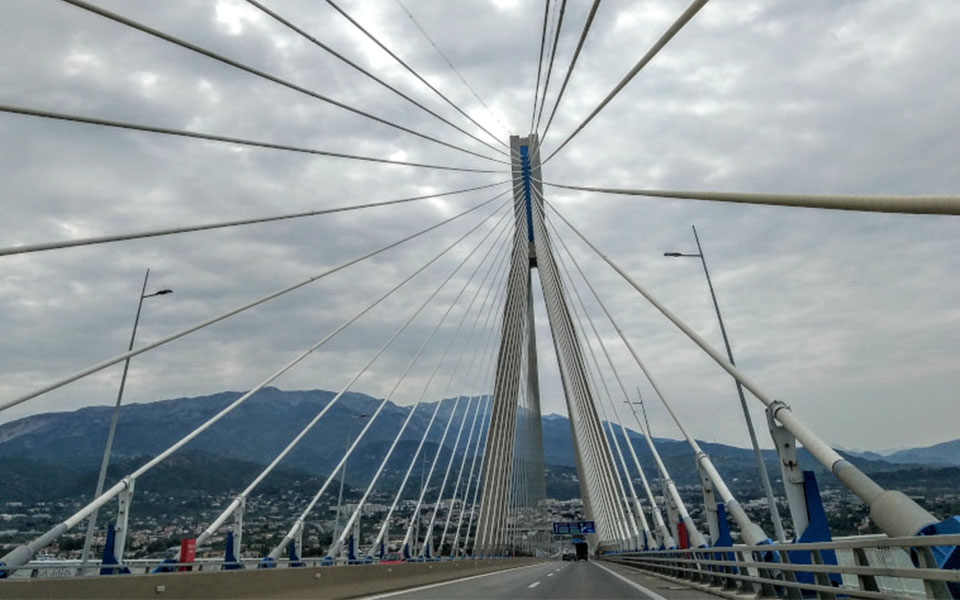
The Rio Antirrio bridge
© Lisa Radinovsky
To return to Athens on a faster highway (with substantial toll charges), take the magnificent Rio Antirrio bridge across the gulf toward Patras. According to the Municipality of Nafpaktia, at 2,880 meters (approximately 1.8 miles), this is “the world’s longest multi-span cable-stayed bridge”. With its kaleidoscope of cables and their four towering pylons, the bridge crossing toward mountains beyond the town of Rio is as exciting as an amusement park ride. Only the cost (almost 14 euros per car) prevented us from driving back and forth across the bridge rather than following the highway back to Athens.
Originally published on Greek Liquid Gold: Authentic Extra Virgin Olive Oil (greekliquidgold.com). Visit the site for recipes with olive oil, photos from Greece, agrotourism and food tourism suggestions, and olive oil news and information.
From Santorini sunsets to ancient ruins,...
The charming port city of Volos...
City or mountain? Urban strolls or...
How Metsovo thrives against the odds...